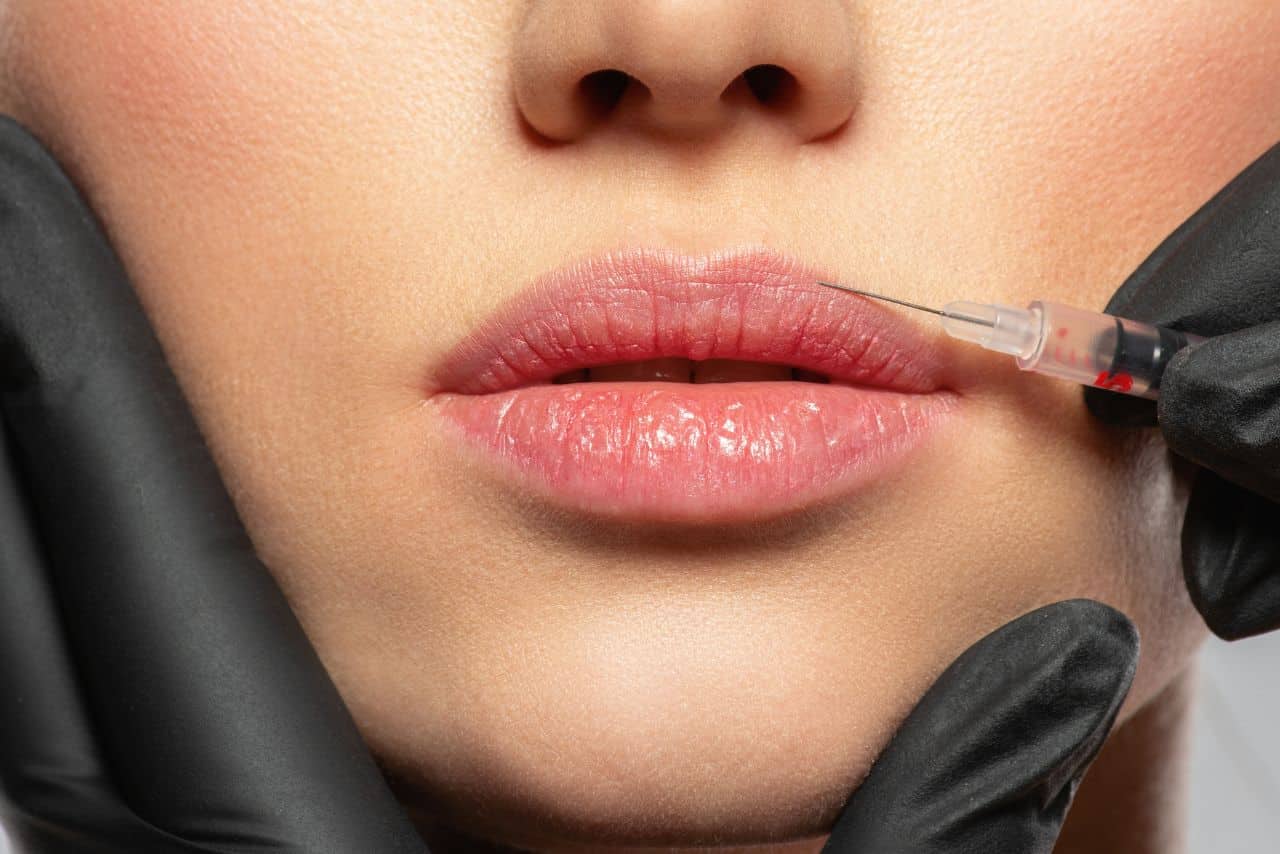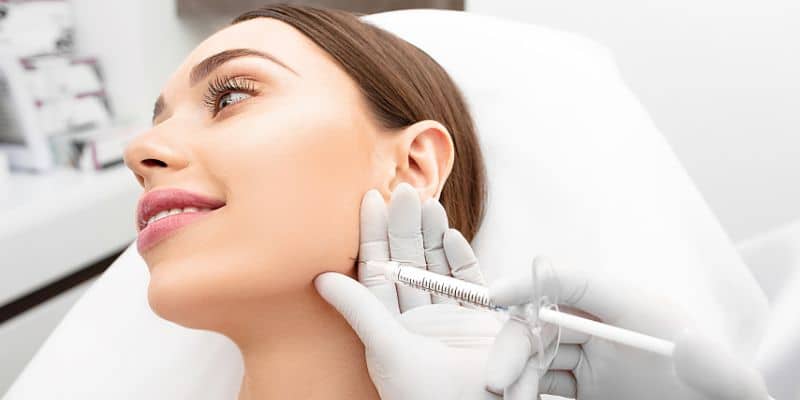
Facial rejuvenation is possibly the most common form of aesthetic medicine, constantly evolving as new techniques and technologies emerge. At its forefront are dermal fillers, versatile tools known for their remarkable capacity to restore youthful contours and smooth wrinkles, significantly enhancing the vitality of the face. This article delves into the unique world of dermal fillers, shedding light on their role and efficacy in facial rejuvenation. It presents an opportunity to explore and understand the anatomy of the face, how aging impacts it, and how dermal fillers can mitigate these effects. Special emphasis is placed on highlighting the most challenging facial areas to treat, offering innovative solutions and practices to overcome these challenges.
An Overview of Dermal Fillers
Dermal fillers represent one of the most transformative advancements in aesthetic medicine over the past several decades. With their ability to fill wrinkles, restore lost volume, and contribute to facial rejuvenation, these products have become essential tools in the armamentarium of aesthetic practitioners.
Fundamentally, dermal fillers are injectable substances designed to replenish the volume beneath the skin. They work by filling in or plumping up the treatment area, helping to smooth out wrinkles and lines, or augment facial features. The results can range from subtle to dramatic, depending on the patient’s wishes and the skill of the administering physician.
Dermal fillers can be broadly categorized into three groups: temporary, semi-permanent, and permanent fillers. Each category has its own set of characteristics, ideal usage scenarios, benefits, and potential complications.
Temporary fillers, as the name suggests, provide a short-term solution for facial rejuvenation. They are made of substances that are naturally absorbed by the body over time. Hyaluronic acid (HA) fillers are the most common type of temporary filler. HA is a naturally occurring substance in the body that helps to keep the skin hydrated and volumized. HA fillers are generally well-tolerated and have a lower risk of complications. Their effects can last between six months to two years, depending on the product and treatment area.
Semi-permanent fillers offer a longer-lasting solution, with results often persisting for two to five years. These fillers, such as calcium hydroxylapatite (CaHA) and poly-L-lactic acid (PLLA), stimulate the body’s natural collagen production while also providing immediate volume. CaHA is typically used for deeper wrinkles and folds, while PLLA is commonly used for broader volume restoration. It’s important to note that while these fillers offer longer-lasting results, they also carry a higher risk of complications than temporary fillers.
Permanent fillers, like polymethylmethacrylate (PMMA), can provide results that last many years or even indefinitely. PMMA fillers are composed of microspheres suspended in a collagen gel. The microspheres stimulate the body’s collagen production, resulting in long-term volume augmentation. However, the permanent nature of these fillers means any complications or undesirable results are more difficult to address, necessitating a highly skilled practitioner for their use.
The choice of dermal filler depends on a variety of factors, including the patient’s aesthetic goals, the area of the face being treated, and the patient’s tolerance for potential risks. In general, practitioners often start with temporary fillers, especially for patients new to dermal fillers, and may consider semi-permanent or permanent options for patients seeking a longer-lasting solution.
Given their potential for transforming facial appearance, dermal fillers have become a cornerstone of aesthetic medicine. They offer physicians a tool to combat the signs of aging and to help patients feel more confident and satisfied with their appearance. With an understanding of the different types of dermal fillers and their properties, physicians can better meet the diverse needs of their patients and deliver effective, personalized facial rejuvenation.
Facial Anatomy and Dermal Fillers
Understanding facial anatomy is a critical prerequisite for successful treatment with dermal fillers. Indeed, an intimate knowledge of the facial anatomy is paramount in delivering safe, effective, and natural-looking outcomes. From the skin’s surface to the underlying muscles and bone, every layer is essential to comprehend for accurate filler placement and technique.
When considering facial anatomy, it’s vital to note that the face is not a flat canvas, but a three-dimensional structure. It has unique contours and volumes which change dynamically with facial expression and age. Several studies have shown that the ageing process affects not only the skin but also the underlying muscles, fat pads, and bone. Thus, a comprehensive understanding of the structural composition of the face is crucial for restoring youthful volumes and contours effectively.
The face comprises three key layers: the epidermis, dermis, and subcutis. Each layer offers unique properties, which influence how dermal fillers interact with the skin. The epidermis is the skin’s outermost layer, providing a barrier against environmental factors. The dermis, located below the epidermis, houses sweat glands, hair follicles, and blood vessels. It contains collagen and elastin fibers which give skin its elasticity and strength. As age advances, collagen and elastin production decreases, resulting in the formation of wrinkles and fine lines.
The subcutis, or hypodermis, is the deepest layer of skin, comprising fat and connective tissue. It’s responsible for temperature regulation and cushioning against trauma. Aging may lead to a reduction in subcutaneous fat, giving the face a more hollow or sagged appearance.
In addition to the skin, the underlying muscles of facial expression play a crucial role in the aging process. For example, repetitive contraction of these muscles over time contributes to the formation of dynamic lines and wrinkles. Therefore, an understanding of muscular anatomy helps tailor treatment to the individual’s facial dynamics and expression patterns.
Beneath the muscles lies the bony structure of the face. As we age, bone resorption and remodeling alter the facial skeleton, contributing to the appearance of ageing. By understanding these changes, practitioners can better target dermal filler placement to restore lost volume and recreate youthful facial proportions.
Dermal fillers act at various levels within these structures, providing volume, enhancing contours, and reducing wrinkles. The specific properties of a dermal filler, such as its viscosity, elasticity, and cohesivity, will determine its suitability for different treatment areas and depths of injection. For example, a more cohesive filler might be selected for deeper placement to enhance bony contours, while a less cohesive filler might be chosen for superficial treatment of fine lines.
When applying dermal fillers, it is also important to consider the facial arteries and veins. Accurate knowledge of the vascular anatomy helps to prevent complications such as vascular occlusion, which can lead to skin necrosis or even blindness.
The Most Challenging Areas to Treat with Dermal Fillers
Dermal fillers, by and large, have transformed the aesthetics industry by providing non-invasive solutions for facial rejuvenation. However, the application of dermal fillers isn’t a one-size-fits-all approach; certain areas of the face pose unique challenges in terms of anatomy, patient expectations, and aging patterns. Identifying these challenging areas and navigating their intricacies can make a substantial difference in outcomes.
Tear Troughs
Among the trickiest areas to treat are the tear troughs, those delicate grooves extending from the inner corner of the eye down towards the cheek. The skin in this region is thin and highly susceptible to volume loss and wrinkling. It’s also an area where errors or over-correction can be very noticeable, leading to dissatisfaction.
Understanding the complex anatomical considerations of this area is crucial. Moreover, expertise in selecting the right filler is essential. A softer hyaluronic acid (HA) filler, for instance, is often preferred due to its malleability and lower risk of causing lumpiness or Tyndall effect (a bluish discoloration). Striking a balance between replenishing volume loss and maintaining a natural look is key in this sensitive region.
Nasolabial Folds
Nasolabial folds, the lines running from the nose to the corners of the mouth, also present a unique challenge. These folds naturally become more pronounced with age, and overcorrection can lead to an unnatural, “stuffed” appearance.
Treating nasolabial folds successfully often involves addressing volume loss in neighboring areas, such as the cheeks, rather than just injecting the folds themselves. In this way, a more natural youthful look can be achieved, emphasizing a holistic approach to facial rejuvenation.
Marionette Lines
Marionette lines, extending downward from the corners of the mouth, can be stubborn and difficult to treat due to the complexity of the underlying facial structures. Overfilling this area is a common mistake, which can lead to an unnatural outward projection of the chin area.
A targeted, conservative approach is usually recommended when treating marionette lines. By integrating the treatment with a broader understanding of facial symmetry and proportions, results will appear more harmonious and satisfying to patients.
Midface (Cheeks and Temples)
Loss of volume in the midface, particularly the cheeks and temples, is a hallmark of aging, yet restoring this area can be challenging. The goal isn’t simply to replace lost volume; it’s to do so in a way that restores the natural, youthful contours of the face.
In the cheeks, overfilling or incorrect placement can lead to a “chipmunk” appearance, while under-correction may not adequately address sagging. For temples, under-treatment can result in a skeletal look, but over-treatment might lead to unnatural bulging. Achieving a balanced, harmonious result requires skill, an understanding of three-dimensional facial aesthetics, and an appreciation for individual facial differences.
Lips
Finally, the lips are perhaps one of the most requested, yet challenging areas for dermal filler application. The objective is to enhance shape and volume while preserving the unique characteristics that define the individual’s lips.
Choosing the right type of filler is paramount. More cohesive fillers may be suited for defining the vermillion border or Cupid’s bow, while softer fillers can be used for plumping the body of the lip. Moreover, maintaining symmetry and avoiding overfill is vital to prevent the notorious “duck lips” look.
Advanced Techniques and Best Practices
Dermal filler applications have evolved dramatically in the last few years, fueled by advancements in filler technology, greater understanding of facial anatomy, and novel injection techniques. These advancements not only offer opportunities for greater precision and improved outcomes but also place increased demands on practitioners to stay abreast of the latest techniques and best practices.
A crucial aspect of modern filler application is striving for a natural look and feel. Gone are the days when overfilled cheeks and overly plump lips were the norm. Patients now desire subtle enhancements that respect and enhance their natural facial structure, making the application of dermal fillers more an art than a science.
Practitioners achieve this natural look by adhering to the principle of balance. Different areas of the face harmonize with each other and contribute to the overall perception of beauty. Therefore, it’s essential to approach the face as a whole, treating individual areas in the context of the entire face. This holistic approach requires an intimate understanding of facial proportions and how they interplay to create a balanced and natural appearance.
Adherence to safety protocols is another critical best practice. Complications, though rare, can be serious. Thus, thorough knowledge about the anatomy of the face, including the location of blood vessels, nerves, and other structures, is vital. To avoid vascular occlusion, practitioners should be aware of high-risk areas and use the aspiration technique, especially when injecting into these regions.
In patient consultation, practitioners have a responsibility to understand the patient’s needs thoroughly. An open and honest conversation about their aesthetic goals, medical history, and concerns is crucial. Providing a realistic expectation of what dermal fillers can and cannot do is fundamental to maintaining patient satisfaction. A well-informed patient will have a better experience, higher satisfaction, and lower likelihood of post-treatment dissatisfaction or complications.
Similarly, addressing patient discomfort is paramount. Although dermal fillers come with integrated lidocaine, additional local or topical anesthesia can help make the procedure more comfortable for the patient. Practitioners may also use a technique called gentle aspiration before injection to ensure the needle is not inside a blood vessel, which can reduce the risk of bruising and swelling.
Post-procedure care is as important as the treatment itself. Providing detailed post-treatment instructions to patients – including limiting vigorous exercise, avoiding sun and heat exposure, and not manipulating the treated areas – can enhance results and decrease potential side effects.
Following up with the patient after the procedure is another essential practice. It allows practitioners to assess the results, deal with any complications, and plan for maintenance treatments. Remember, facial rejuvenation is not a one-time procedure but a process that often requires adjustments over time to maintain results.
Training and education are the foundations of best practices. Staying updated with the latest research findings, attending workshops, and regularly consulting with peers will ensure that practitioners are at the forefront of knowledge and techniques.
Future Developments and Innovations in Dermal Fillers
As medicine advances, so too does the field of cosmetic and aesthetic procedures, particularly regarding dermal fillers. Continuous research and technological advancements present new opportunities and solutions for the challenges faced in facial rejuvenation. The following section will explore some of the cutting-edge developments and innovations in the realm of dermal fillers that might reshape the future of facial aesthetics.
Firstly, there’s a growing interest in the area of bioengineered fillers. Bioengineered fillers use the body’s natural processes to stimulate growth and rejuvenation, resulting in longer-lasting and more natural-looking outcomes. For instance, the development of stem cell-enriched fillers aims to harness the regenerative capabilities of stem cells. The intent is to create a filler that not only adds volume but also stimulates the natural regenerative process, thus improving the quality and longevity of results.
Secondly, researchers are exploring the concept of “smart” fillers. These innovative products are designed to respond to facial movements and expressions dynamically. The idea behind these next-generation fillers is to maintain the natural look and feel of the face, even during movement. This flexibility should significantly enhance the filler’s aesthetic outcome and reduce some of the unwanted side effects associated with a static filler.
In tandem with the development of new types of fillers, refining injection techniques also continues to be an area of focus. There’s significant interest in developing more accurate and less invasive application methods. One such example is the use of microcannulas. These thin, flexible tubes enable precise filler placement while minimizing potential damage to the surrounding tissues and reducing patient discomfort.
Another exciting advancement in the field involves the use of imaging technology to improve the precision of filler placement. High-definition ultrasound and other imaging technologies can help doctors visualize the underlying structures of the skin in real-time during filler application. Such a procedure allows for enhanced accuracy and a better understanding of how the filler interacts with the patient’s facial tissues, which should lead to improved results.
There’s also an evolving trend of individualized, patient-centric treatments. The concept of ‘one size fits all’ is gradually being replaced by an approach that tailors treatments to each patient’s unique facial structure, skin condition, and aesthetic goals. This trend aligns well with advancements in 3D imaging and biometric analysis, which can assist in creating highly personalized treatment plans.
Furthermore, researchers are examining the potential for combination therapies. While dermal fillers alone offer significant benefits, when used in conjunction with other rejuvenation treatments like laser therapies or neuromodulators, the results can be further enhanced. Understanding how these therapies can work together most effectively remains a key research area.
Lastly, the industry is focusing on improving patient safety. For example, new developments include formulations with built-in local anesthetics to improve patient comfort and reversible fillers that can be easily dissolved if any complications arise or if the patient is unhappy with the results.
Each of these innovations holds promise for the future of dermal fillers. It is an exciting time in the world of aesthetic medicine, with ongoing research likely to continue to advance the field and present new opportunities to enhance patient outcomes further. The challenge and opportunity for medical professionals lies in keeping pace with these advancements, continuously updating their knowledge, and skillfully integrating these innovations into practice to provide the best possible patient care.
Conclusion
In the realm of aesthetic medicine, dermal fillers continue to play an indispensable role in facial rejuvenation. The challenges associated with treating complex facial areas have been discussed in this article, alongside potential strategies for successful interventions. Key areas such as tear troughs, nasolabial folds, marionette lines, midface, and lips all present their unique difficulties, but with a deep understanding of facial anatomy, careful patient consultation, and adept application of advanced techniques, satisfactory outcomes can be achieved.
Furthermore, the importance of maintaining a natural look and feel in facial rejuvenation treatments cannot be understated. Patient satisfaction often hinges on these subtleties and their role in delivering an enhanced, yet believable, aesthetic.
Looking forward, the field of dermal fillers is ripe with innovation and potential advancements. These future developments promise to further improve the quality of treatment outcomes and possibly simplify some of the currently challenging areas of application. It is crucial for practitioners in the field to stay updated and adaptable, continuously refining their practice with the evolution of this discipline. This commitment to learning and mastery promises to maximize patient satisfaction and results in the art and science of facial rejuvenation.

Doris Dickson is an expert voice on cosmetic medical treatments and products, writing for Health Supplies Plus, a premier online resource for the medical community. Her concise, no-nonsense takes spotlight the tools and techniques shaping modern aesthetics.


